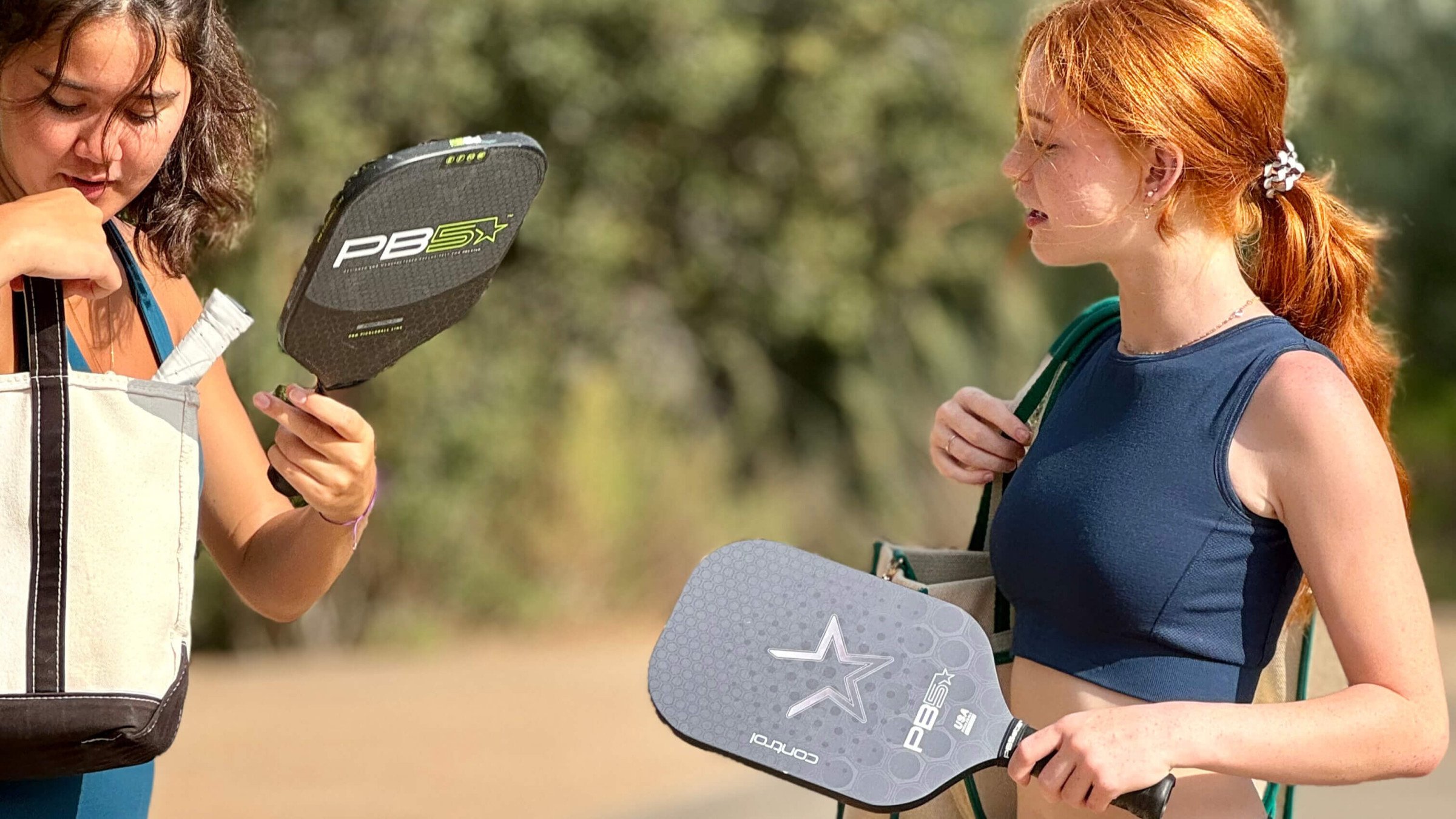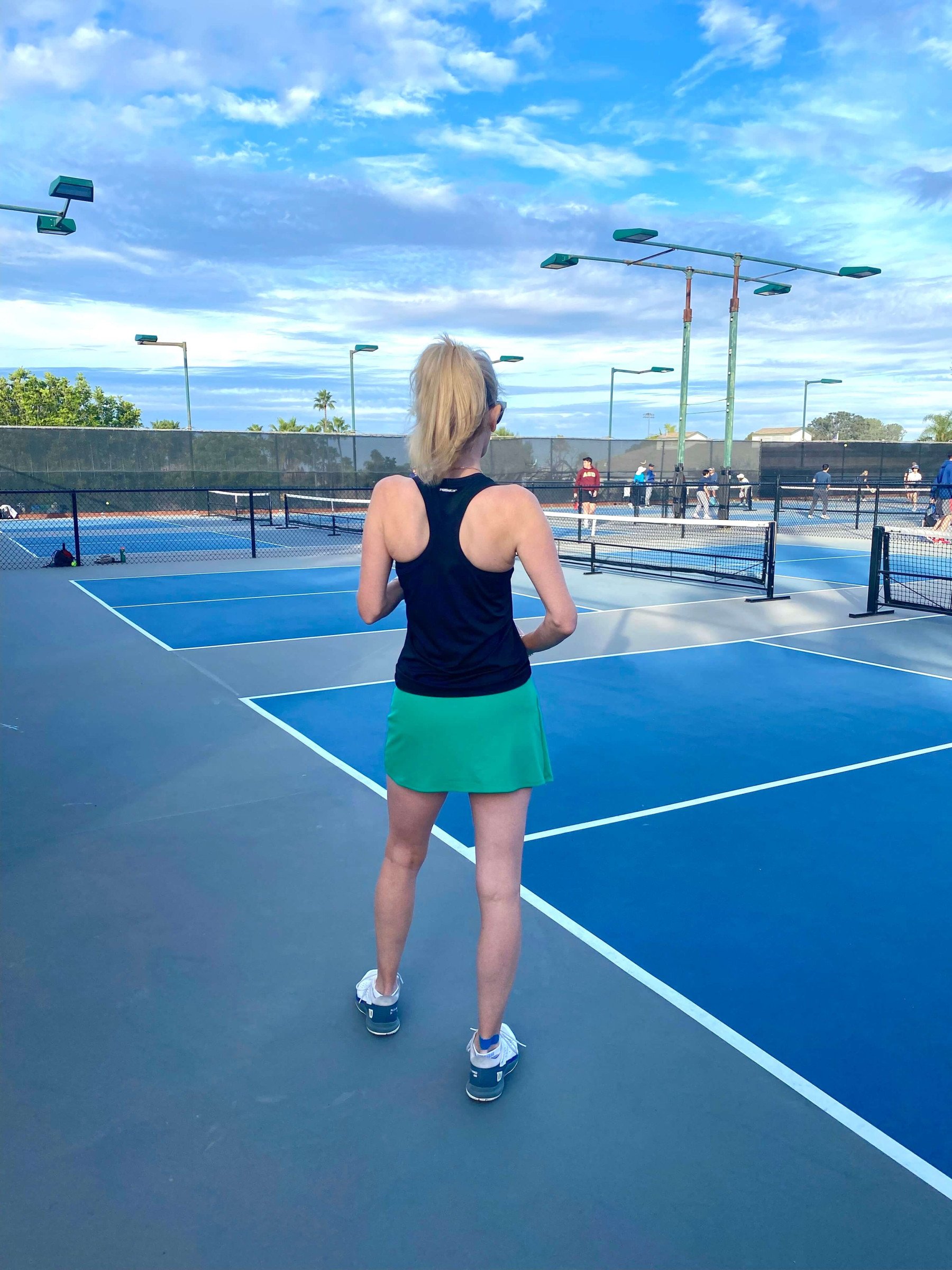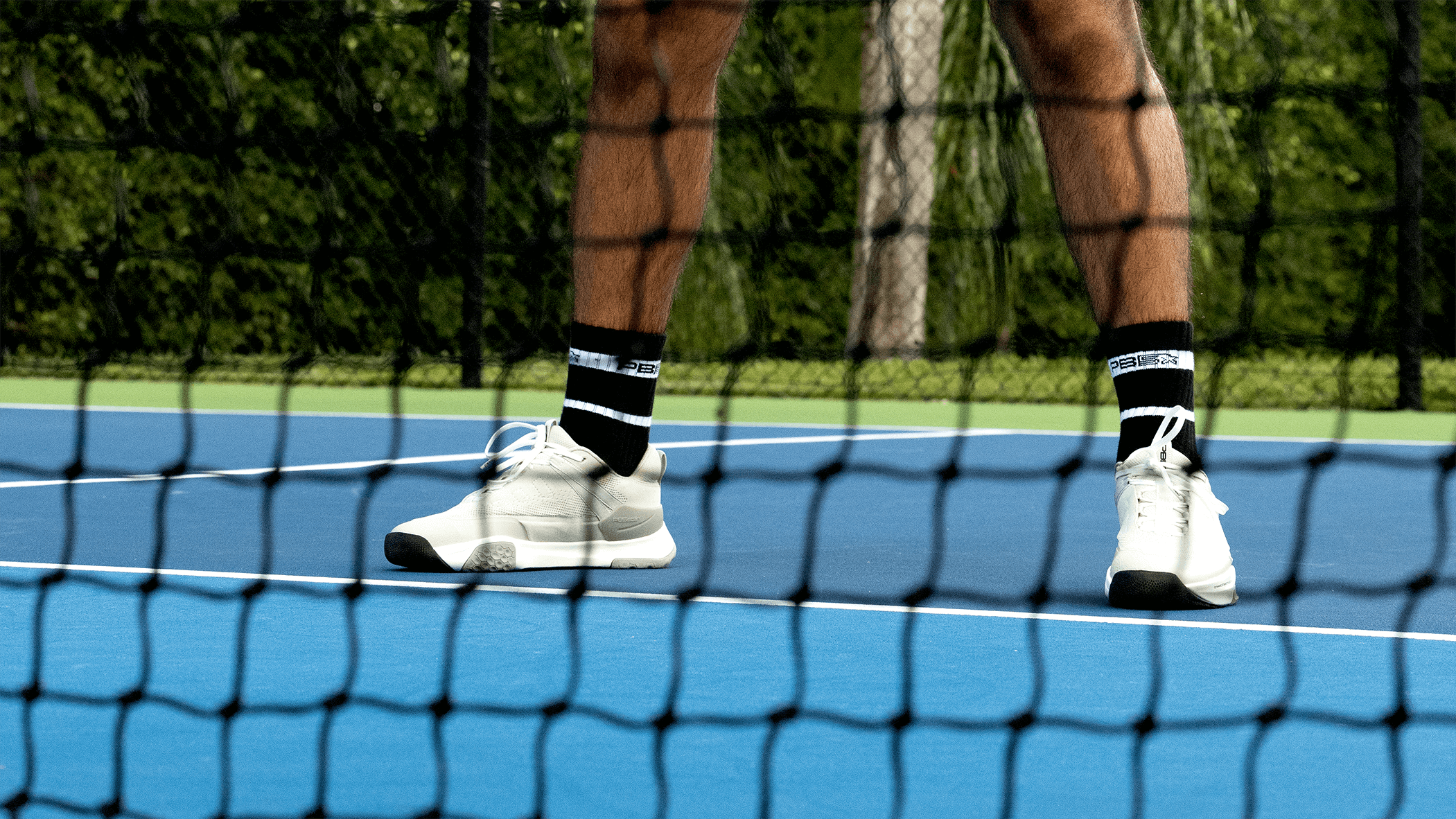Key takeaways:
Regripping your pickleball paddle every 100-150 hours enhances control, comfort, and overall gameplay performance.
Choosing the right grip material and thickness matches your playing style and maintains consistent performance under various conditions.
Proper maintenance and timely grip replacement are key to maximizing your paddle's effectiveness and extending lifespan.
A worn-out paddle grip affects your game more than most players realize, causing missed shots and unnecessary strain on your arms and wrists. Fortunately, replacing your grip is a quick, simple maintenance task that dramatically improves control and playing comfort. Fresh grips provide that secure connection between you and your equipment, preventing the paddle from twisting during powerful shots and reducing hand fatigue during long play sessions.
Want to know how to regrip pickleball paddles? This guide breaks down the simple process of replacing your pickleball paddle grip, showing you exactly which materials work best and how to install them properly. You'll discover options for different playing styles and weather conditions. You'll also get practical maintenance tips that extend your grip's life and improve your game performance. For high-quality pickleball gear, check out PB5star's selection of equipment and apparel.
Why regripping your paddle matters
The grip condition directly impacts your playing style and shot execution. A worn grip forces you to squeeze harder to maintain control, leading to arm fatigue and reduced shot accuracy. This extra tension travels up your arm, affecting your wrist flexibility and natural swing motion. The subtle adjustments you make to compensate for a slippery grip can develop into bad habits even after replacing the grip.
In humid environments or during intense play, sweat buildup can make a worn grip dangerously slick, causing the paddle to twist unexpectedly during critical moments. Temperature changes also affect grip tackiness - what feels secure during warm-up might become problematic as the day heats up.
Many players don't realize how much a worn grip affects their game. A good grip is the essential connection between you and your paddle. Regularly replacing your grip:
Prevents slippage during intense play, especially in hot or humid conditions
Reduces hand fatigue and helps prevent blisters
Customizes the feel of your paddle to your specific preferences
Extends the life of your paddle by protecting the handle
Improves confidence in your shots when you can hold the paddle securely
Step-by-step guide to pickleball paddle regripping
Regripping your paddle might seem intimidating at first, but it's actually a straightforward process that takes just a few minutes once you've done it a couple of times. Follow these simple steps to apply your new grip smoothly and securely.
What you'll need:
New overgrip or replacement grip
Scissors
Finishing tape
Optional: grip solvent (for removing stubborn adhesive)
Step 1: Remove the old grip
Start at the top of the handle and carefully peel away the finishing tape. Unwrap the old grip completely, working your way down to the bottom of the handle. If the old grip is difficult to remove, you can use grip solvent to dissolve the adhesive.
Step 2: Clean the handle
Wipe down the handle to remove any residual adhesive or dirt. This ensures the new grip will adhere properly and last longer.
Step 3: Position the new grip
For an overgrip (thin grip that goes over existing grip):
Start at the bottom of the handle with the adhesive side facing the handle
Leave about 1/4 inch of the grip extending beyond the butt end
For a replacement grip (completely replaces old grip):
Start at the bottom with the tapered end
Align it so the grip will be even when wrapped
Step 4: Begin wrapping
Start wrapping with slight tension, overlapping each previous layer by about 1/4 inch. Maintain consistent tension throughout to avoid bubbles or wrinkles.
Step 5: Continue up the handle
Work your way up the handle in a spiral pattern. The amount of overlap affects the thickness of the final grip, so adjust according to your preference.
Step 6: Finish at the top
When you reach the top of the handle, trim any excess grip material, leaving enough to fold over the top edge.
Step 7: Secure with finishing tap
Apply the finishing tape around the top to secure the grip in place. Doing this prevents the grip from unwrapping during play.
Now that you've successfully regripped your paddle consider which grip materials work best for your game. The right grip isn't just about proper installation—material choice significantly affects your paddle's performance and feel.
Choosing your paddle grip
With many options available in today's market, knowing the key differences between grip types will help you select one that matches your playing style, hand sensitivity, and local climate conditions.
Overgrips vs. replacement grips
Overgrips are thin layers applied over your existing grip. They're easy to change and good for frequent replacements.
Replacement grips are thicker and completely replace your old grip, offering more cushioning.
Materials
Synthetic leather: Durable covering that mimics the feel of real leather but with better durability. It provides a balanced hand feel with moderate sweat absorption.
PU (polyurethane): A soft, plastic-based material with a sticky or "tacky" surface that helps your hand grip firmly. Better at absorbing moisture than synthetic leather.
Perforated grips: These grips have tiny holes punched throughout the material to allow sweat to escape and evaporate, keeping your hands drier during intense play in hot weather.
Cushioned grips: Grips with extra foam or gel padding underneath the surface material to absorb shock and reduce hand fatigue during extended play.
Thickness
Thinner grips let you feel more of what's happening with the ball on impact but offer less protection.
Thicker grips act as gentler shock absorbers on your hands and joints but reduce your ability to "feel" the ball during contact.
Texture
Tacky grips have a sticky surface that helps maintain grip security when hands are dry.
Textured or perforated grips have patterns or holes that create friction and channel moisture away, making them better choices for players with sweaty hands or humid environments.
Finding your ideal grip involves some trial and error. Don't hesitate to experiment with different materials and styles until you discover what feels right for your game.
Top maintenance questions about paddle grip
Players commonly ask about proper grip care and maintenance to maximize performance and paddle lifespan. Here are some of the most frequent questions about keeping your pickleball paddle grip in prime condition.
How often should I replace my pickleball paddle grip?
For recreational players, it's every 1-3 months, depending on the frequency of play. Competitive players might replace overgrips after every few sessions. If your grip feels slippery or looks worn, it's time for a replacement.
What signals tell me it's time for a new grip?
Look out for slick spots, peeling edges, or that tell-tale loss of tackiness. When you start adjusting your grip more often during games or notice increased hand moisture, it's time for a replacement. Our paddle care guide can help you spot these signs early.
What are common regripping mistakes to avoid?
Players often rush to remove old grip material or apply uneven tension during wrapping. Remove all adhesive residue and maintain steady pressure throughout the wrapping process. Starting too high or too low on the handle is another frequent misstep that affects your grip's longevity.
Which grip style matches my game?
Your perfect grip is as unique as your playing style. Thinner grips give you that connected feel for precise shots, while thicker options offer extra comfort and sweat absorption.
How can I make my grip last longer?
Keep your grip game strong with simple maintenance habits. Wipe down after each session, store your paddle in a protective cover, and avoid extreme temperatures.
Grip right, play better
Spending a few minutes on your pickleball paddle grip delivers huge benefits when you're playing and it's one of the easiest ways to up your game. A properly gripped paddle responds better to your touch, protects your hands from blisters, and gives you that extra edge during competitive play.
It's also important to remember that grip preference is highly personal, and what works for your doubles partner might feel uncomfortable in your hands. Don't hesitate to experiment with different materials, thicknesses, and textures until you find your perfect match. Your ideal grip should feel like a natural extension of your arm, allowing you to focus on strategy and shot placement rather than constantly adjusting your hold.
If you're looking for great pickleball gear, PB5star provides high-quality paddles and comfortable apparel designed for pickleball players of all skill levels.







